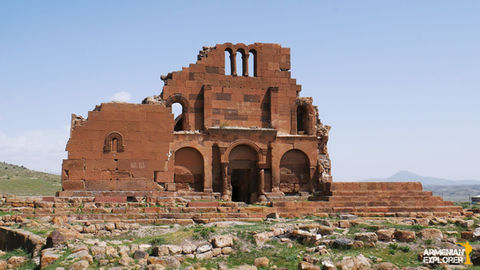

Религия в Армении
Армения – колыбель христианства. Став первой страной, принявшей христианство в 301 году н.э., она продемонстрировала миру не только политическую волю, но и глубокую духовную зрелость. Религия на протяжении веков формировала уникальную армянскую культуру, историю и национальную идентичность. . В этой статье мы приглашаем вас в увлекательное путешествие по истории Армянской Церкви, чтобы глубже понять её древние традиции и �уникальную роль в современном мире.
Религия в Армении: Краткий обзор
Армения имеет богатую историю, культуру и идентичность, и религия является важным аспектом этой идентичности. Давайте рассмотрим основные особенности религии в Армении, её историю и роль в обществе.
Большинство армян, около 97%, являются христианами и принадлежат Армянской Апостольской Церкви — одной из старейших христианских церквей в мире, основанной в I веке н. э. апостолами Варфоломеем и Фаддеем, которые проповедовали христианство в Армении в I веке н. э.
Армянская Апостольская Церковь является частью Восточной православной общины, что означает, что она не принимает Халкидонский собор (451 год), который определил доктрину о двух природах в одном лице Христа. Вместо этого церковь придерживается учения миафизитизма, который утверждает, что Христос имеет одну божественную и одну человеческую природу.

Христос, изображённый на фреске в монастыре Кобайр
Армения стала первой страной, принявшей христианство в качестве государственной религии в 301 году н. э., когда царь Трдат III принял христианство под влиянием святого Григория Просветителя. Духовным центром Армянской Апостольской Церкви является Эчмиадзинский собор, где проживает католикос (высший лидер). На данный момент католикосом является Гарегин II.

Собор Эчмиадзина
Армянская Апостольская Церковь обладает богатой и разнообразной литургией, культурой и историей. Она использует древний алфавит, изобретённый Месропом Маштоцем в V веке н. э. Также церковь имеет множество переводов священных писаний на армянский язык с различных языков.
Армянская Апостольская Церковь отмечает яркий календарь праздников и торжеств в течение всего года, отражая свою богатую историю, традиции и глубокую веру.
Вот некоторые основные праздники:
Рождество (6 января): Отмечается рождественскими литургиями, шествиями со свечами и семейными встречами.
Пасха (переменная дата): Радостное празднование с церковными службами, традиционными блюдами и праздничной росписью яиц.
Преображение Господне (переменная дата): Отмечается праздником Вардавар, который сопровождается веселым обливанием водой и общественными гуляниями.
Успение Пресвятой Богородицы (15 августа): Отмечается освящением винограда и праздничными трапезами.
Праздник Святого Саркиса (14 февраля): Отмечается как День святого Валентина, с романтическими традициями и особыми церковными службами.
Терендез (21 февраля): Праздник костров, символизирующий очищение, с молодыми людьми, прыгающими через пламя.
Праздник Святого Григория Просветителя (30 сентября): Почитается основатель Армянской Церкви, с особыми литургиями и торжествами.
Праздник Святых Переводчиков (1 октября): Отмечается праздник переводчиков Библии на армянский язык, с церковными службами и культурными мероприятиями.

Монастырь Хор Вирап
Религиозное разнообразие в Армении
Хотя большинство армян являются апостольскими христианами, в стране также присутствуют другие христианские деноминации, такие как Восточная православная церковь, католики (как армянские, так и латинские), протестанты, Свидетели Иеговы, Ассирийская Церковь Востока (несторианцы) и другие. Эти группы имеют свои собственные церкви и общины.
Самой крупной нерелигиозной группой являются язиды, составляющие около 1% населения Армении. Большинство язидов проживает в западной части страны, многие из них прибыли в Армению в 19 и начале 20 века, чтобы избежать религиозных преследований. Язиды и армяне имеют тесные отношения, и крупнейший в мире язидский храм находится в селе Акналич.

Самый большой язидский храм в мире в селе Акналич
Влияние религии на армянскую жизнь
Религия сыграла ключевую роль в формировании национальной идентичности, культуры, политики и общества Армении. Она вдохновляла на различные художественные выражения, включая литературу, музыку, живопись, архитектуру и праздники.
Как и в других местах, религия в Армении является связующей нитью для человеческого взаимодействия. Места поклонения — это не только духовные центры, но и общинные хабы, где люди собираются для того, чтобы праздновать, скорбеть и поддерживать друг друга. Церковь, в особенности, играет роль объединяющей силы, подчеркивая общие ценности и коллективное ощущение идентичности.

Вход в Музей Геноцида
Вызовы и стойкость
Армянская религиозная жизнь сталкивалась с многочисленными трудностями, включая Геноцид армян и политические потрясения. Тем не менее, стойкость армянского народа очевидна в его способности адаптироваться, сохранять и черпать силу из своего религиозного наследия.
В заключение, религия в Армении — это не просто набор верований; это динамичная сила, пронизывающая повседневную жизнь, соединяя людей, формируя традиции и внося вклад в стойкость нации.












